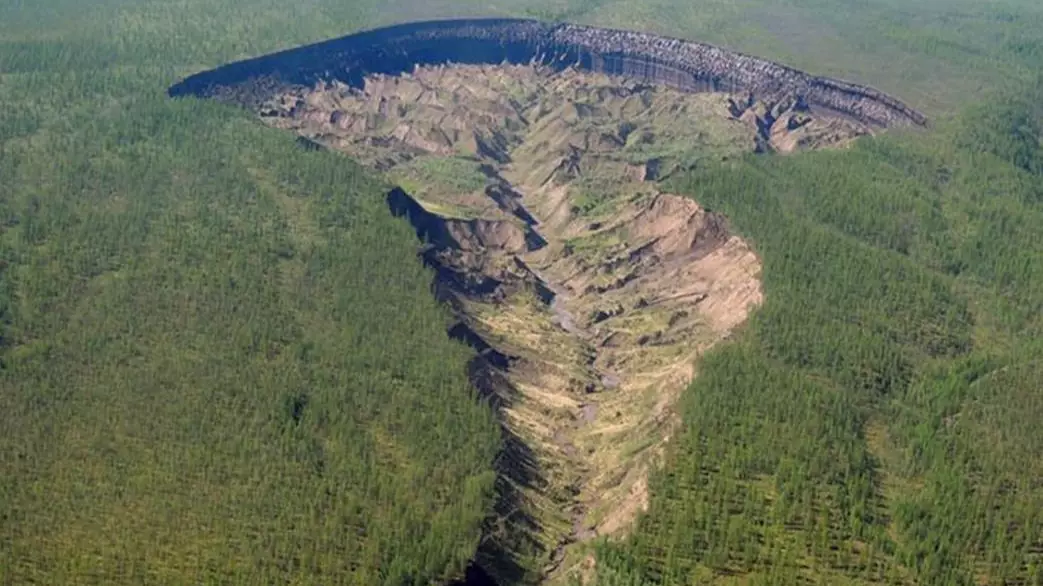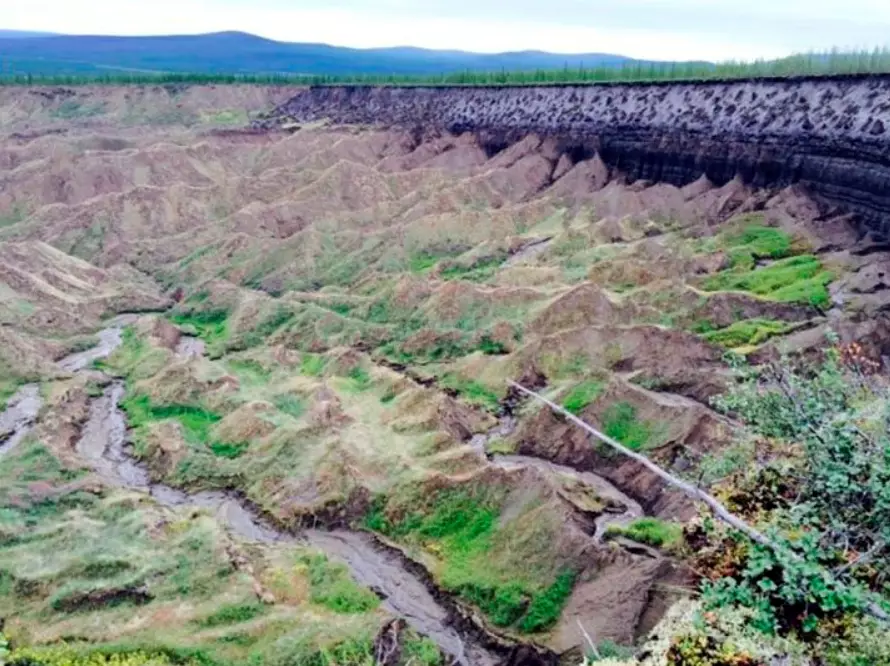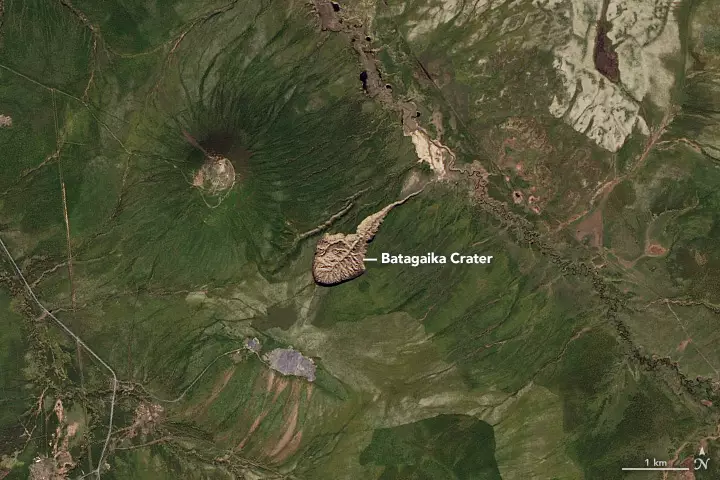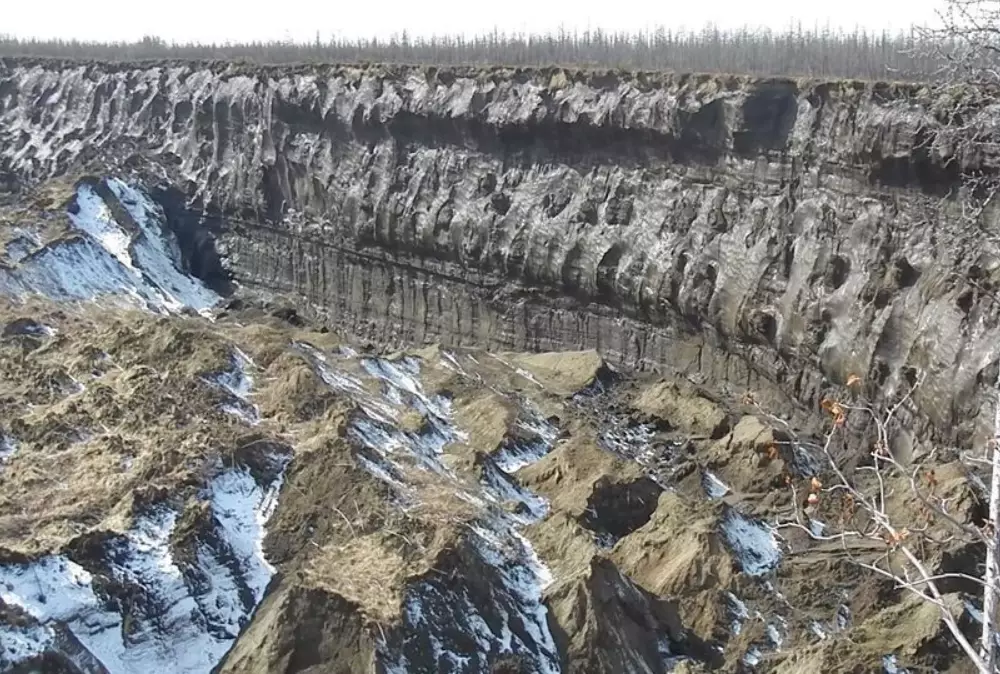
A huge crater in Siberia known as the 'gate to hell' is deepening, revealing thawing permafrost, animal carcasses and ancient forest that scientists believe could help us better understand climate change.
Situated near the Yana river basin around 660km north-east of the city of Yakutsk, the Batagaika crater or 'megaslump' is the largest of its kind, already measuring 1km long and 50m deep.
Advert
However, it is thawing rapidly, meaning the large space is deepening at an alarming rate and could lead to dangerous landfalls in nearby settlements.

The Siberian tundra is home to many megaslumps, but the Batagaika crater is among the more concerning of them, having been dubbed the 'gate to hell' by Yakutian locals.
Sensors have been monitoring the growth of the crater, with experts warning that it is moving by around 20-30 metres each year as the ice melts into water, which flows away.
Advert
They say climate change is speeding up this process, exposing gases and mineral deposits that were once trapped under ice for thousands of years, and releasing them into the atmosphere.


Kseniia Ashastina, of Germany's scientific Max Planck Institute, told the BBC: "Ice turns to water, that evaporates or melts and flows away, and while the residual sediments are no longer kept together by ice, subside.
Advert
"This results in an uneven landscape surface, due to variable ice contents of the sediments.
"Therefore, the Batagai thaw slump from above looks like a ray stretching from north-east to south-west with a remarkable, almost 70m vertical ice wall on the south-west edge."
According to geology professor Julian Murton, of the University of Sussex, the problem began back in the 1950s and 60s.
Murton also told the BBC: "The catch with Batagai is that although it survived multiple episodes of warming in the past, where the warming has been natural - in the last 50 or 60 years human disturbances have destabilised this ancient permafrost.
Advert
"So, I guess the message is that we need to be very careful."

Scientists continue to monitor the site, looking out for warning signs while also exploring the dissolving permafrost to understand more about the past - with each layer revealing a different snapshot in time.
Murton said investigations into the age of the bottom layers of the permafrost show the crater may be around 650,000 years old, making it the oldest of its kind in Eurasia and the second oldest globally.
Advert
Ashastina said studying Batagaika could help scientists understand the links between human and animals, vegetation and environmental shifts to find ways to combat climate change.
She added: "Though this may sound so far away from our daily concerns and daily life, actually it's not just curiosity that drives the Batagai research.
"It's also the applicability of the results to the ongoing environmental changes - because the past is the key to the future.
"And by understanding the processes that occurred in the past and their aftermath, we can adapt to the ongoing future."
Featured Image Credit: Alexander Gabyshev/Research Institute of Applied Ecology of the North
Topics: World News, Global Warming, climate change, News